Advanced AI Allows for Synchronised yet Autonomous Drone Swarms
Has the main challenge of drone swarms been solved?
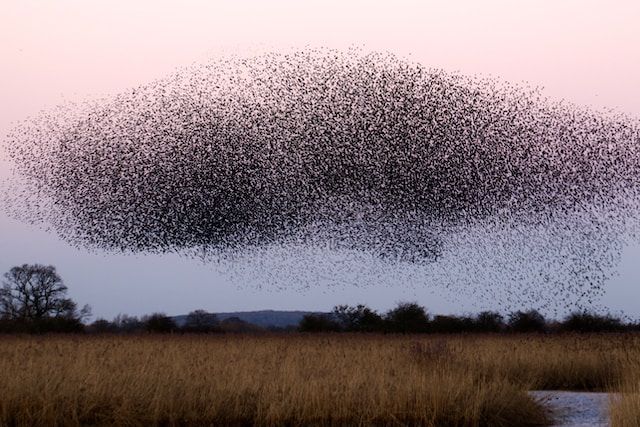
Anyone who has been following the war in Ukraine is well aware of the impact that drones are having in both reconnaissance and firepower.
However, as the drones continue to fly in the Don Valley basin, military strategists and defence manufacturers are envisaging the next stage of drone application in war, and are trying to solve the challenges of flying and fighting with drone swarms.
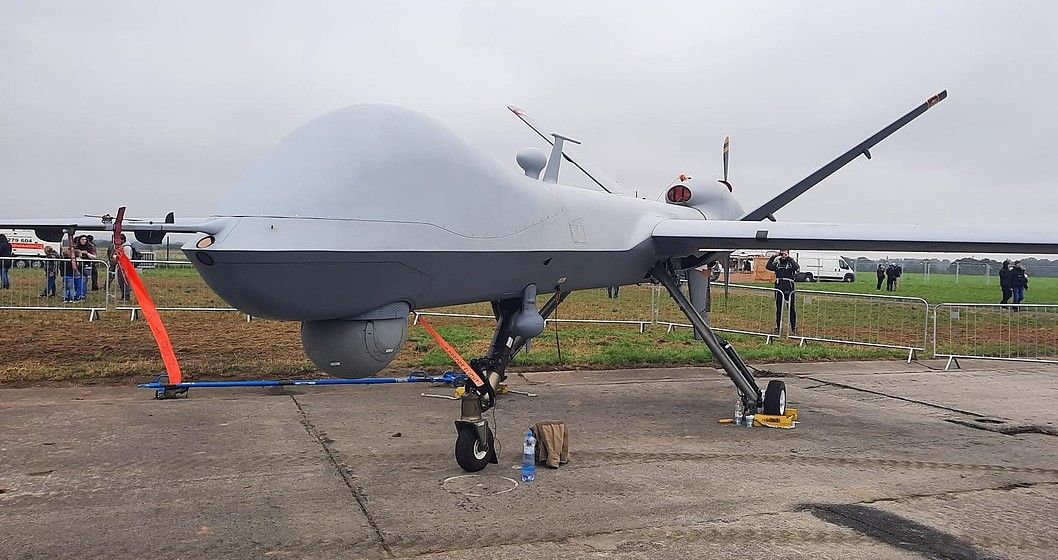
The influence of a single well-positioned drone may be good, but the strike force of an overwhelming number of drones can win a war. A major reason for support for a drone swarm strategy comes from an incident during the 2020 Nagorno-Karabakh Conflict between Azerbaijan and Armenia.
As Military Intelligence Specialist, Ryan Bridley, explains, “[During the conflict] Azeri forces utilized numerous types of weaponized drones including the Turkish Bayraktar TB-2, which terminated nearly 250 armored vehicles and 40 air-defense systems. After the swarms severely damaged Armenia’s land and air defense capabilities, Azeri forces enacted mechanized infantry operations to seize contested territory. A military initially thought to be disadvantaged utilized swarms to enable its offensive capabilities. These swarms destroyed hundreds of assets, weakened Armenia’s ability to wage war on the ground and in the air, and provided the Azeris an opportunity to conduct a decisive strike.”
However, the expansion of a drone force from a few hundred aircraft into a few thousand (or even a more futuristic few hundred thousand) throws up a key problems of workforce and control.
What is a drone swarm?
Light shows conducted by a swarm of hundreds or even thousands of drones are not swarms in the true military sense. Instead, each of these display drone is simply programmed to follow a coordinated, pre-planned itinerary. The individual drones are unaware of one another or their surroundings.
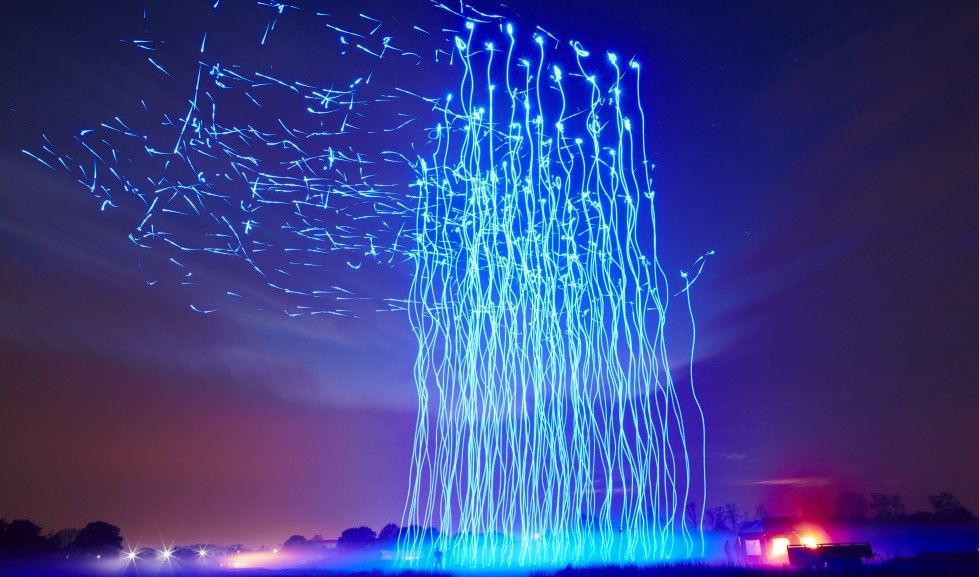
In contrast, a military drone swarm acts similar to a flock of birds. They fly together yet remain aware of their surroundings and how close they are to one another. Each individual in the group utilizes algorithms to avoid obstacles, can spread out as a team to widen a search area, and can conduct coordinated or individual manoeuvres and attacks.
At present, each drone needs one or more human operators - typically one person to fly the drone and another to function as a spotter or weapons deployment officer. The money required to train thousands of drone pilots would be enormous. Even then, the system required to coordinate their flight, avoid collisions, and then assign roles and targets, becomes impractical.
In the future, it is thought that AI will be able to control each drone in a synchronised way, sharing information instantly so as to fly as a group without colliding, while each could act autonomously when required, but this technology is not yet available.

However, if drone swarms could be constructed and controlled in large enough numbers then they could be used to overwhelm even the strongest existing defences. While dozens or hundreds of drones might be shot down, enough would get through to neutralize air defence systems, destroy ammunition dumps, radar instillations, missile silos etc. to allow for conventional missiles, aircraft, ships, and other military hardware to be used in relative safety.
It is a strategy being planned for in what military jargon calls “anti-access/area denial” (or A2/AD). This defines any area “covered by advanced surface-to-air and anti-ship missiles that prevent US forces from entering.”
Drone Swarm Control and Command
The US Military has already made A2/AD a goal and has set about acquiring the more complex control scheme needed. They are therefore investing heavily in ‘Super Swarm’ - a cooperative planning and task distribution system which would allow for a drone swarm large enough to “overwhelm defenses with vast numbers of drones attacking simultaneously.”
And an additional side project called MATes (for human operated and autonomous teams) which seeks to facilitate a human-swarm collaboration and increase the autonomy of the swarm.
As the MIT Technology Review explains, “The communications bandwidth available for the operator may decline during the mission—for example, as a result of deliberate jamming—and MATes allows the swarm to act on its own initiative when it cannot get decisions back from the operator. MATes also feeds back information gathered by the swarm into its decision making: it may change its routing when drones detect new threats, or send drones to investigate a newly identified target. This will be quite a challenge for artificial intelligence.”
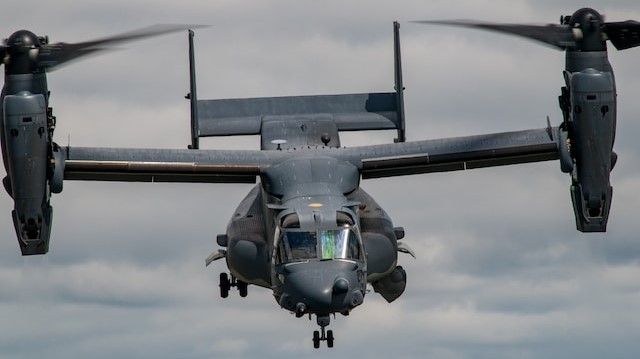
“Thousands of autonomous drones mean thousands of points for error,” says Zachary Kallenborn, a policy fellow at George Mason University. “Modeling and simulation would help reduce the potential for error, but accounting for the myriad complexities of the real world is tough.”
AI Breakthrough for Drone Swarms
It is this situation that makes the latest announcement from defence company Anduril so exciting, as they claim to have developed, “a hardware-agnostic, end-to-end software platform that enables teams of diverse robotic assets to work together under human supervision to dynamically perform complex missions in any domain.”
Called Lattice for Mission Autonomy, the company claims the system, “… autonomously delivers the core functions that are essential for mission planning and execution: autonomous piloting, identifying threats and objects of interest, managing signature and communications to enhance survivability, orchestrating multi-asset maneuvers, and synchronizing the delivery of effects.”
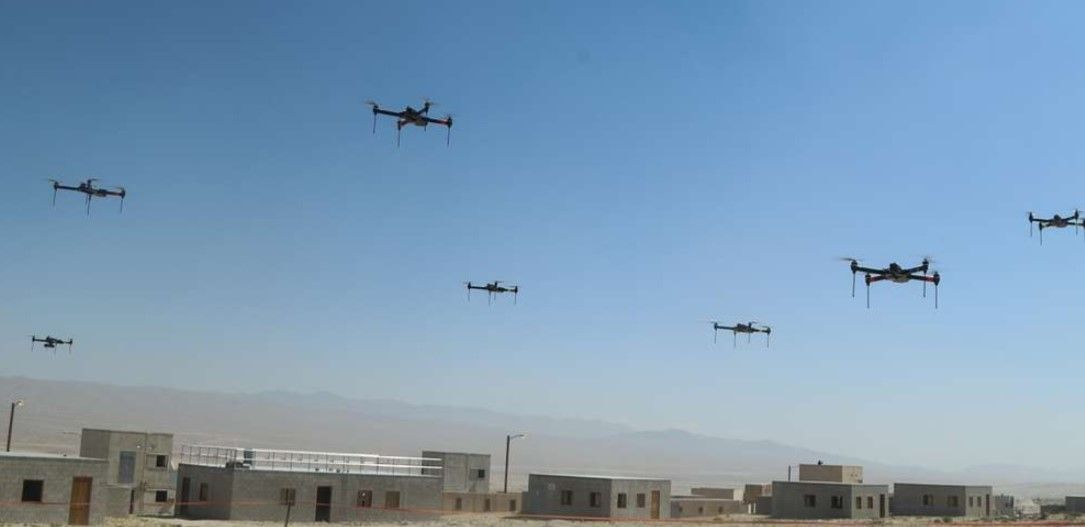
If successfully applied, the software platform is reportedly capable of allowing a single operator to control hordes of drones and other autonomous systems.
It would also allow the US Department of Defense to push past limitations caused by budget and workforce constraints.
“When we look at unmanned [military] formations today,” says Anduril’s chief strategy officer Chris Brose, “they cost way too much, there are way too many people inside, [and] they have way too many loops.” Adding that more personnel will eventually “not scale against a competitor like China, which has four times as many people as the US.”
Yet in addition to controlling hundreds of drones, the software system is designed to improve human performance and in doing so help save lives.
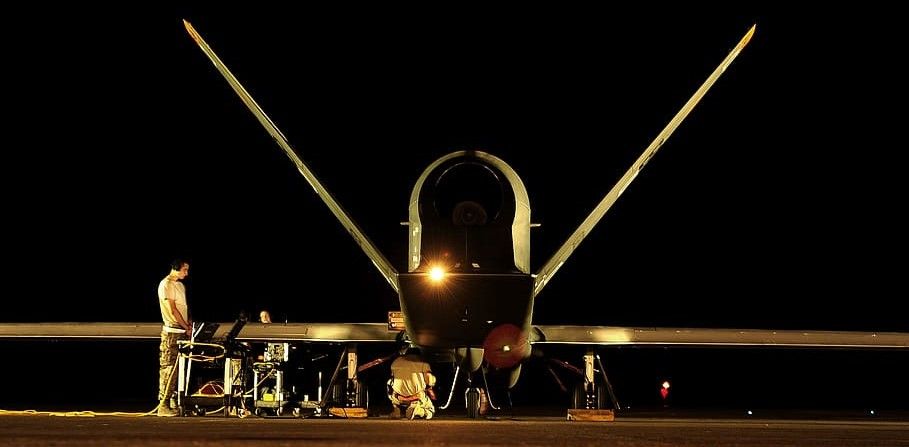
“In many ways it [a drone swarm] is no more daunting than the idea of flying a plane off a ship, or coordinating the movements of hundreds of manned planes, must have seemed to generations past,” says Peter W. Singer, a drone strategy specialist at the think tank New America. “Just as Amazon envisions a world of both robotic 18-wheeler trucks for bulk and small delivery drones for the final mile, we’ll likely see the same with their military parallels.”
This is what makes the breakthrough in drone swarm command and control no small thing.
“The significance of drone swarms,” says Zachary Kallenborn, a policy fellow at George Mason University, “is that they can be conceivably applied to virtually any mission.”
And with this technology and others like it, drone swarms will change wars.
Photo credit: James Wainscoat on Unsplash, Simon Fitall, Wikimedia, Nara, Lance Anderson,

